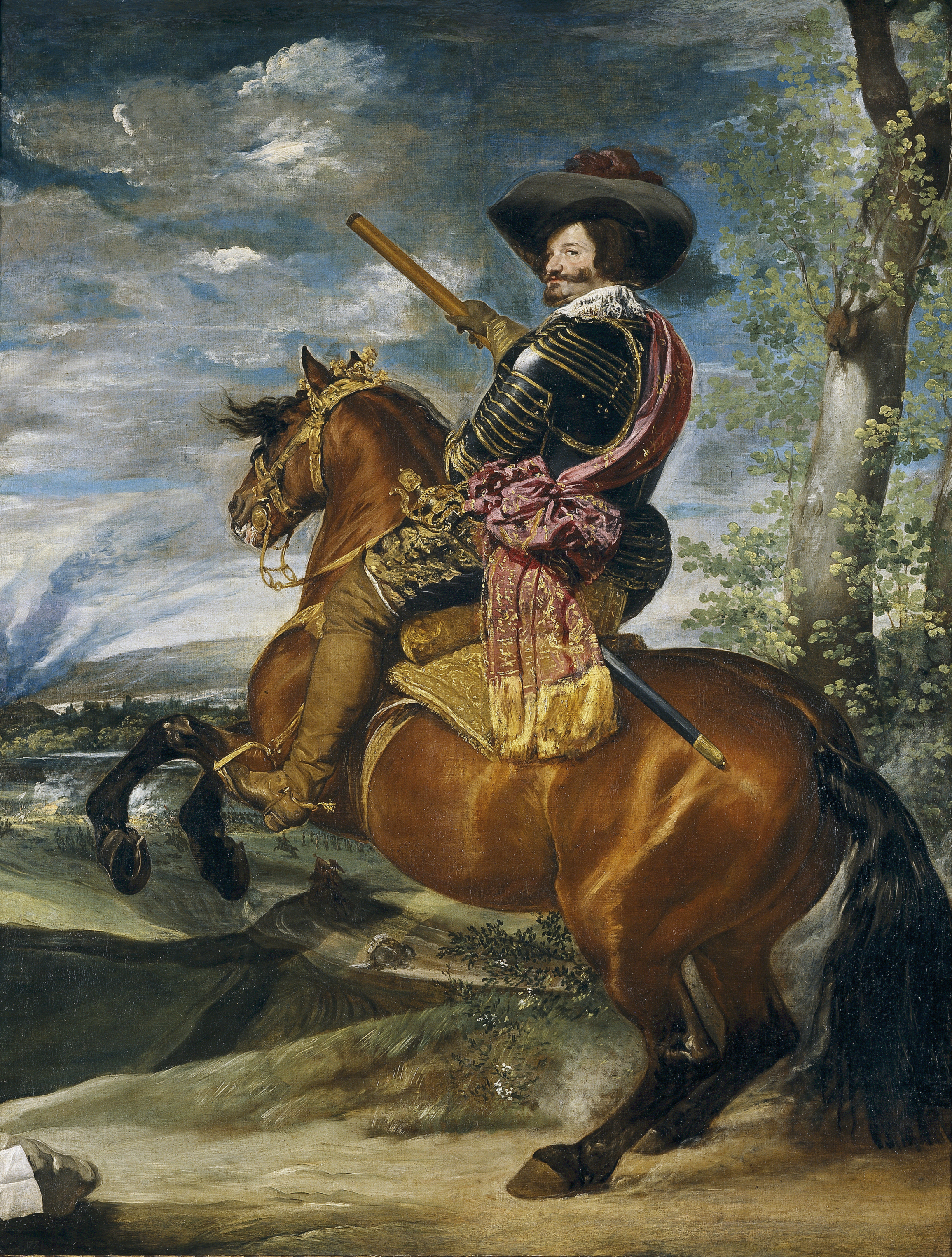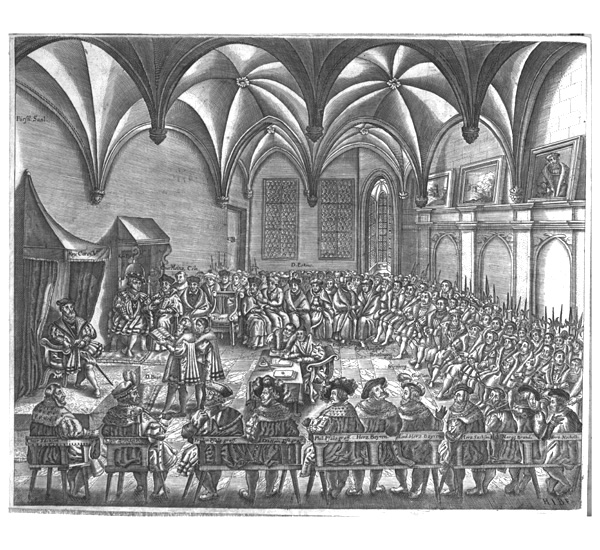|
Juán Hurtado De Mendoza De La Vega Y Luna
Juan Hurtado de Mendoza y Mendoza (1555-1624), son of Íñigo López de Mendoza y Mendoza, 3rd Marques of Mondéjar, was the Mayordomo Mayor of Philip III of Spain and Philip IV of Spain and in virtue of his marriage with Ana de Mendoza y Enríquez de Cabrera head of the House of Mendoza from 1594 until his death in 1624. An important work of Second scholasticism Second scholasticism, also called Modern scholasticism, is the period of revival of scholastic system of philosophy and theology, in the 16th and 17th centuries. The scientific culture of second scholasticism surpassed its medieval source (Scho ..., Pedro Hurtado de Mendoza's ''Universa Philosophia'' (Lyons: Prost, 1624) was dedicated to him. References 1555 births 1624 deaths Marquesses of Spain House of Mendoza {{Spain-noble-stub ... [...More Info...] [...Related Items...] OR: [Wikipedia] [Google] [Baidu] |
Iñigo López De Mendoza Y Mendoza
Íñigo López de Mendoza y Mendoza (1512– 21 April 1580 in Mondéjar) was a Spanish noble, military, diplomat and politician in the service of King Philip II of Spain. He was the 4th Count of Tendilla () and 3rd Marquis of Mondejar (). Life From his father Luis Hurtado de Mendoza y Pacheco, Íñigo López de Mendoza y Mendoza inherited the titles of count of Tendilla and marquis of Mondejar. He became also 3rd and last Captain General of Granada. His mother was Catalina de Mendoza, daughter of the Count of Monteagudo. Íñigo married María de Mendoza, daughter of the very influential Íñigo López de Mendoza, 4th Duke of the Infantado. In 1555, he became commander of the Spanish land and sea in the relief of the Turkish siege of Oran and Bugía. In 1560, he was Spanish Ambassador in Rome. He led the Spanish troops during the early stages of the Morisco Revolt together with Luis Fajardo, 2nd Marquis of los Vélez. The American historian Henry Charles Lea wrote of Mondéja ... [...More Info...] [...Related Items...] OR: [Wikipedia] [Google] [Baidu] |
Philip III Of Spain
Philip III (; 14 April 1578 – 31 March 1621) was King of Spain and King of Portugal, Portugal (where he is known as Philip II of Portugal) during the Iberian Union. His reign lasted from 1598 until his death in 1621. He held dominion over the Spanish Netherlands, Naples, Sicily, Sardinia, and the Duchy of Milan during the same period. A member of the House of Habsburg, Philip III was born in Madrid to King Philip II of Spain and his fourth wife, Anna of Austria (1549–1580), Anna of Austria. The family was heavily Inbreeding, inbred; Philip II and Anna were related both as uncle and niece, as well as cousins. Philip III married his cousin Margaret of Austria, Queen of Spain, Margaret of Austria, the sister of Ferdinand II, Holy Roman Emperor. Although known in Spain as Philip the Pious, his political reputation internationally has generally been negative. Historians C. V. Wedgwood, R. Stradling and J. H. Elliott have described him, respectively, as an "undistinguished and insi ... [...More Info...] [...Related Items...] OR: [Wikipedia] [Google] [Baidu] |
Philip IV Of Spain
Philip IV (, ; 8 April 160517 September 1665), also called the Planet King (Spanish: ''Rey Planeta''), was King of Spain from 1621 to his death and (as Philip III) King of Portugal from 1621 to 1640. Philip is remembered for his patronage of the arts, including such artists as Diego Velázquez, and his rule over Habsburg Spain, Spain during the Thirty Years' War. By the time of his death, the Spanish Empire had reached approximately 12.2 million square kilometres (4.7 million square miles) in area but in other aspects was in Decline of Spain, decline, a process to which Philip contributed with his inability to achieve successful domestic and military reform. He was succeeded on his death by his young son Charles II of Spain, Charles II as King of Spain and in 1640 (with the collapse of the Iberian Union) by John IV of Portugal, John IV as King of Portugal. Personal life Philip IV was born in the Royal Palace of Valladolid, and was the eldest son of Philip III of Spai ... [...More Info...] [...Related Items...] OR: [Wikipedia] [Google] [Baidu] |
Ana De Mendoza Y Enríquez De Cabrera
Ana or ANA may refer to: People * Ana (given name), a list of people with the name * Ana people or Atakpame people, an ethnic group of West Africa * ana (gamer), Anathan Pham, an Australian professional ''Dota 2'' player known as ana Places * Ana, Kohgiluyeh and Boyer-Ahmad, village in Iran * Ana or Anah, town in Iraq * Ana, populated place in Morobe Province, Papua New Guinea * Ana or Anié, town in Togo * Ana, community in Niue Arts and entertainment * ''Ana'' (1982 film), a Portuguese film * ''Ana'' (2020 film), an American film * ''The Hole'' (1957 film) or ''Ana'', a 1957 Japanese film * ''Ana'' (1984 TV series), a Pakistani drama on PTV * ''Ana'' (2004 TV series), a Pakistani drama on Geo TV * ''Ana'' (2020 TV series), a Mexican comedy show * ''ana'' (2021 TV series), Syrian TV series starring Taim Hasan * "Ana", a song by the Pixies from '' Bossanova'' * ''Ana'' (Ralph Towner album), 1996 * Ana (Ana album), 1987 * Ana (''Overwatch''), a player character in the ... [...More Info...] [...Related Items...] OR: [Wikipedia] [Google] [Baidu] |
House Of Mendoza
The Mendoza family was a powerful line of Spanish nobles. Members of the family wielded considerable power, especially from the 14th to the 17th centuries in Castile. The family originated from the village of Mendoza (Basque ''mendi+oza'', 'cold mountain') in the province of Álava in the Basque countries. The seigneury of Mendoza became part of the Kingdom of Castile during the reign of Alfonso XI (1312–1350), and thereafter the Mendozas participated in Castilian politics, becoming advisers, administrators, and clerics. The family's branches and name expanded out of its original nucleus in later centuries. Prehistory Álava is a hilly region with a core flat area (the Plains of Álava) bounded at the time by the kingdoms of Castile, and the Navarre in the 13th and 14th century. It had been loosely controlled by Navarre earlier, and retained its own distinctive customs and traditions. The town of Mendoza and the province of Álava itself was also a battlefield, where t ... [...More Info...] [...Related Items...] OR: [Wikipedia] [Google] [Baidu] |
Second Scholasticism
Second scholasticism, also called Modern scholasticism, is the period of revival of scholastic system of philosophy and theology, in the 16th and 17th centuries. The scientific culture of second scholasticism surpassed its medieval source (Scholasticism) in the number of its proponents, the breadth of its scope, the analytical complexity, sense of historical and literary criticism, and the volume of editorial production, most of which remains hitherto little explored. Scotism and Thomism Unlike the "First", i.e. medieval scholasticism, a typical feature of second scholasticism was the development of schools of thought, developing the intellectual heritage of their "teacher". Two schools survived from earlier phases of scholasticism, Scotism and Thomism. The Scotists, mostly belonging to the various branches of the Franciscan order, include the Italians Antonio Trombetta, Bartolomeo Mastri, Bonaventura Belluto; the Frenchman Claude Frassen, the Irish emigrants Luke Wadding, ... [...More Info...] [...Related Items...] OR: [Wikipedia] [Google] [Baidu] |
Pedro Hurtado De Mendoza
Pedro Hurtado de Mendoza (1578 – November 10, 1641), also called Puente Hurtado de Mendoza, was a Basque scholastic philosopher and theologian. Philosophical work Pedro Hurtado de Mendoza entered the Jesuit order in 1595 in Salamanca. He was a teacher of theology and philosophy in Valladolid and he occupied a chair at the University of Salamanca. Hurtado belonged to the third generation of Jesuit scholars and initiated the shift from more realist positions of Francisco Suárez and Gabriel Vásquez towards conceptualism, characteristic of that generation. His conceptualist tendencies were further developed by his pupils Rodrigo de Arriaga and Francisco Oviedo. His variously titled volume on scholastic philosophy (last ''Universa Philosophia'') is the earliest example of the genre of Baroque ''cursus'' typical of 17th- and 18th-century scholastic philosophy and theology. Works * ''Disputationes a Summulis ad Metaphysicam'' (Valladolid 1615) reprinted as: ''Disputationes ad ... [...More Info...] [...Related Items...] OR: [Wikipedia] [Google] [Baidu] |
1555 Births
Year 1555 ( MDLV) was a common year starting on Tuesday of the Julian calendar. Events January–March * January 22 – The Kingdom of Ava in Upper Burma falls. * February 2 – The Diet of Augsburg begins. * February 4 – John Rogers is burned at the stake at Smithfield, London, becoming the first of the 284 Protestant martyrs of the English Reformation to be killed during the five and one-half year reign of Queen Mary I of England. His death is followed within the week by that of Laurence Saunders on February 8 in Coventry, and Rowland Taylor, Rector of Hadleigh, Suffolk, and John Hooper, deposed Bishop of Gloucester on February 9. * February 26 – The Muscovy Company is chartered in England to trade with the Tsardom of Russia and Richard Chancellor negotiates with the Tsar. * March 25 – Valencia, Venezuela, is founded by Captain Alonso Díaz Moreno. April–June * April 9 – Marcello Cervini degli Spannocchi is unanimously ... [...More Info...] [...Related Items...] OR: [Wikipedia] [Google] [Baidu] |
1624 Deaths
Events January–March * January 14 – After 90 years of Ottoman occupation, Baghdad is recaptured by the Safavid Empire. * January 22 – Korean General Yi Gwal leads an uprising of 12,000 soldiers against King Injo in what is called then the Joseon Kingdom, and occupies Hanseong. * January 24 – Afonso Mendes, appointed by Pope Gregory XV as Prelate of Ethiopia, arrives at Massawa from Goa. * February 7 – (January 28, 1623/4 old style) England first colonizes Saint Kitts and Nevis. * February 11 – Yi Gwal installs Prince Heungan, son of the late King Seongjo, to the Korean throne. * February 15 – Yi Gwal's Rebellion ends as the rebels murder Yi Gwal at the town of Mukbang-ri. * February 16 – Kara Mustafa Pasha becomes the Ottoman Governor of Egypt for the second time. * February 19 ** King Filipe III of Portugal issues a decree prohibiting the enslavement of Chinese people in Portugal or in its colonies. **The las ... [...More Info...] [...Related Items...] OR: [Wikipedia] [Google] [Baidu] |
Marquesses Of Spain
A marquess (; ) is a nobleman of high hereditary rank in various European peerages and in those of some of their former colonies. The German-language equivalent is Markgraf (margrave). A woman with the rank of a marquess or the wife (or widow) of a marquess is a marchioness () or marquise (). These titles are also used to translate equivalent Asian styles, as in Imperial China and Imperial Japan. Etymology The word ''marquess'' entered the English language from the Old French ("ruler of a border area") in the late 13th or early 14th century. The French word was derived from ("frontier"), itself descended from the Middle Latin ("frontier"), from which the modern English word ''March (territory), march'' also descends. The distinction between governors of frontier territories and interior territories was made as early as the founding of the Roman Empire when some provinces were set aside for administration by the senate and more unpacified or vulnerable provinces were adm ... [...More Info...] [...Related Items...] OR: [Wikipedia] [Google] [Baidu] |



